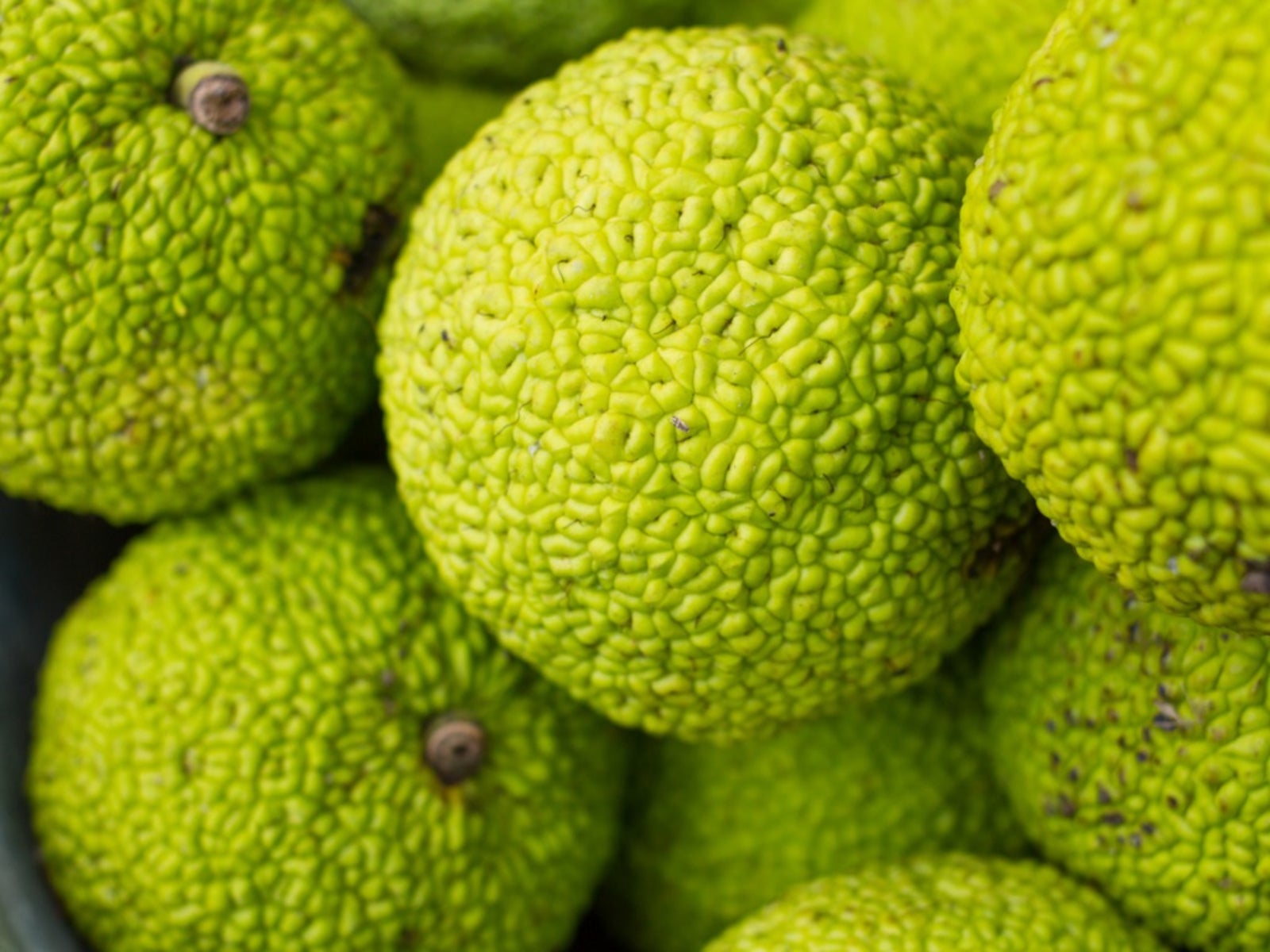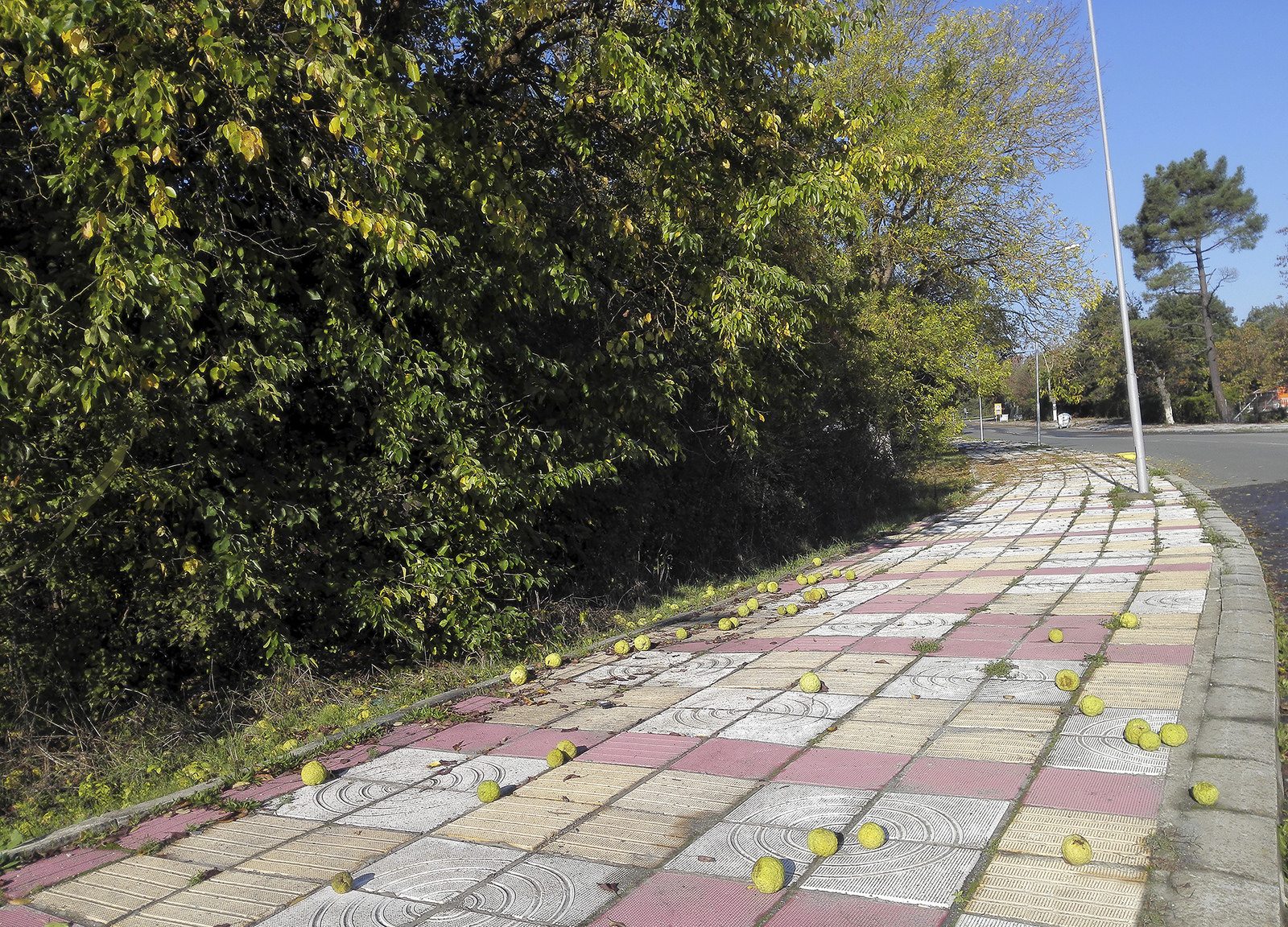What Is Osage Orange – Information About Osage Orange Trees


The Osage orange tree is an unusual tree. Its fruit are wrinkled green balls the size of grapefruit. On the other hand, the trees’ yellow wood is strong and flexible, and so dense that it is immune to termites. Growing an Osage orange tree is fast and easy. Read on for information about Osage orange trees.
What is Osage Orange?
Many people have never heard of this tree. If you mention it, expect questions like: “What is Osage orange?” The Osage orange tree (Maclura pomifera) is no kin to the citrus, but the fruit has a faint orangey fragrance strong enough to result in the common name. Its odd shape and color have given it many nicknames, including green brains and hedge apple. The tree also bears long, tough thorns, sharp as steel and can bust tires. These make it a top choice as a defensive hedge. For years, these trees were used for hedges throughout the eastern half of the nation. Farmers planted the tough little trees in tight rows and pruned them well to keep them bushy. The invention of barbed wire put an end to living Osage hedges, but the wood continued being used for fence posts. It contains tetrahydroxystilbene, an anti-fungicide that may deter insects. Perhaps this chemical is what gives the dense wood its resistance to rot. It's an excellent wood for fence posts and ship masts. If you are interested in growing an Osage orange tree in a hedge, it will likely stay under 20 feet (6 m.) tall, but in the wild, trees can grow much taller. The trunk grows to several feet in diameter.
Osage Orange Growing Conditions
Growing an Osage orange trees is not difficult since the trees grow readily from both seeds and cuttings. Separating the seeds can be a challenge. It is easiest if you wait for fruit to fall to the ground and freeze in winter, since the cold temperatures facilitate seed-removal. Start growing Osage orange trees by planting individual seeds in pots indoors. Don’t start them outside unless you know exactly where you want them to stand in the garden. These trees are not easy to transplant from one place to another outside. Osage are tough native trees and are not picky about growing conditions. This makes the care of Osage orange trees easy. Well-drained soil, adequate irrigation and a sunny location helps the tree grow rapidly and stay healthy. If all this information about Osage orange trees makes you want to start growing one, the squirrels will thank you. Osage orange seeds are a favorite squirrel snack.
Gardening tips, videos, info and more delivered right to your inbox!
Sign up for the Gardening Know How newsletter today and receive a free copy of our e-book "How to Grow Delicious Tomatoes".

Teo Spengler is a master gardener and a docent at the San Francisco Botanical Garden, where she hosts public tours. She has studied horticulture and written about nature, trees, plants, and gardening for more than two decades. Her extended family includes some 30 houseplants and hundreds of outdoor plants, including 250 trees, which are her main passion. Spengler currently splits her life between San Francisco and the French Basque Country, though she was raised in Alaska, giving her experience of gardening in a range of climates.
-
 Types Of Tomatoes Explained: Explore The Many Wonderful Shapes, Colors, Flavors, & Best Uses
Types Of Tomatoes Explained: Explore The Many Wonderful Shapes, Colors, Flavors, & Best UsesThe world of tomato varieties is vast and fascinating. Learn about the key types to grow in your garden, tailored to your preferences and space.
By Amy Grant
-
 Try The Trend – Turn Any Bed Into A Keyhole Garden With This Clever In-Ground Composter
Try The Trend – Turn Any Bed Into A Keyhole Garden With This Clever In-Ground ComposterKeyhole gardening is an efficient and sustainable practice that saves space. Get started on this DIY project quickly and easily with an in-ground composter.
By Bonnie L. Grant
